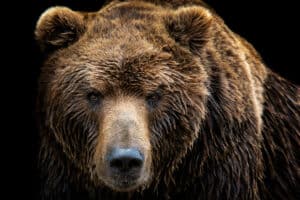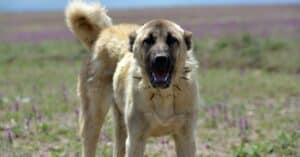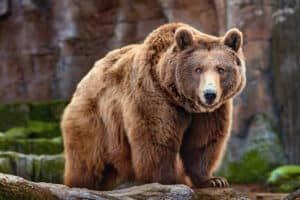Named after U.S. President Teddy Roosevelt, “Teddy Bears” have become a beloved toy of children around the world, due to their cute and huggable appearance. Real-life bears, on the other hand, may look soft and cuddly, but are a far cry from the innocent teddy bears of childhood. Bears are strong and powerful animals that live anywhere from hot humid habitats to the bitter cold of the Arctic. Because of this, bears have adapted all kinds of amazing characteristics and skills. Let’s take a closer look at these remarkable animals with 10 incredible bear facts!
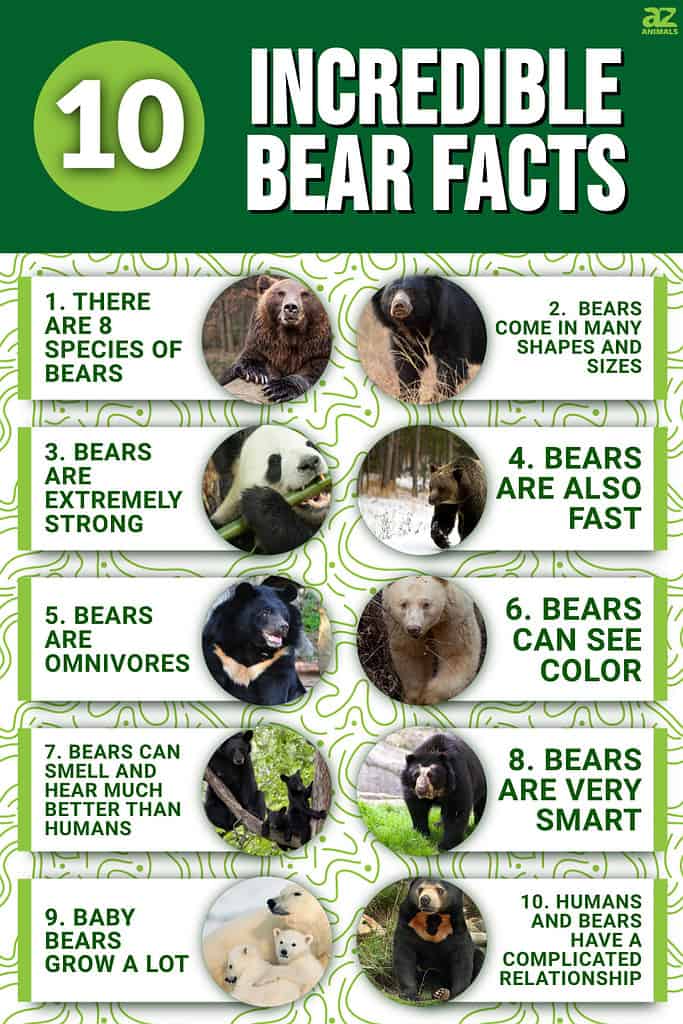
1. There Are 8 Species of Bears
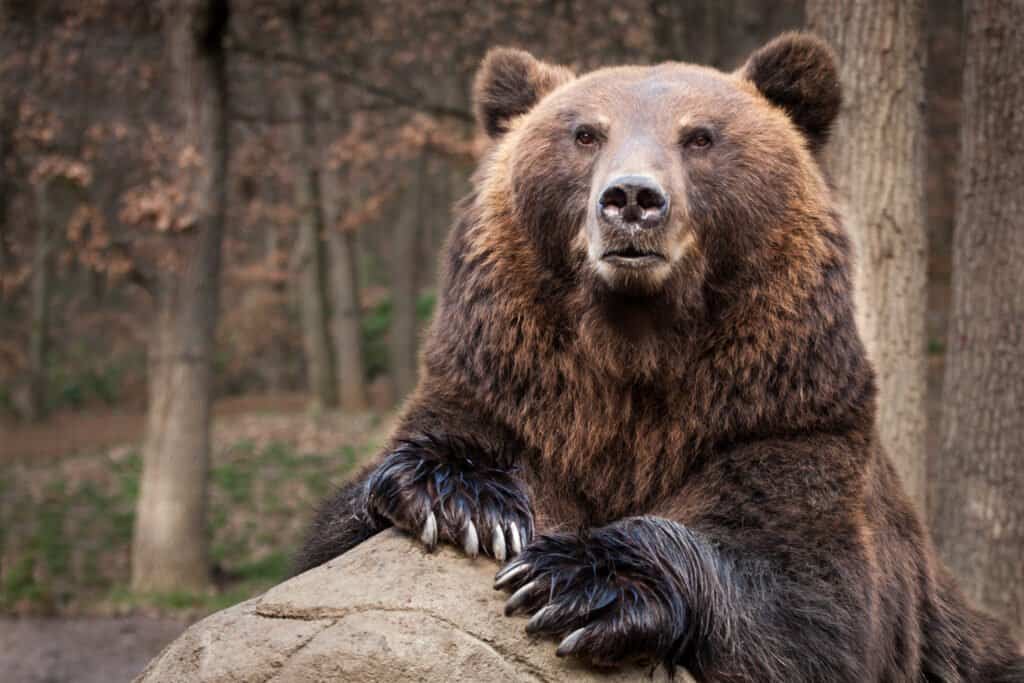
Kamchatka Brown Bears are a subspecies of Brown Bear, and are almost are large as Kodiak Bears.
©Marie Dirgova/Shutterstock.com
There are 8 different bear species that live across the earth:
- Polar Bears and Brown Bears (like Grizzly Bears and Kodiak Bears) live in North America, Europe, and Asia.
- American Black Bears only live in North America.
- Spectacled or Andean Bears live in South America.
- Sloth Bears, Sun Bears, Asiatic or Moon Bears, and Giant Panda Bears live in Asia.
You might have noticed that Koala Bears are not on this list. Even though “bear” is often included in their name, koalas are not actually bears. They are marsupials, like kangaroos and wombats.
2. Bears Come in Many Shapes and Sizes
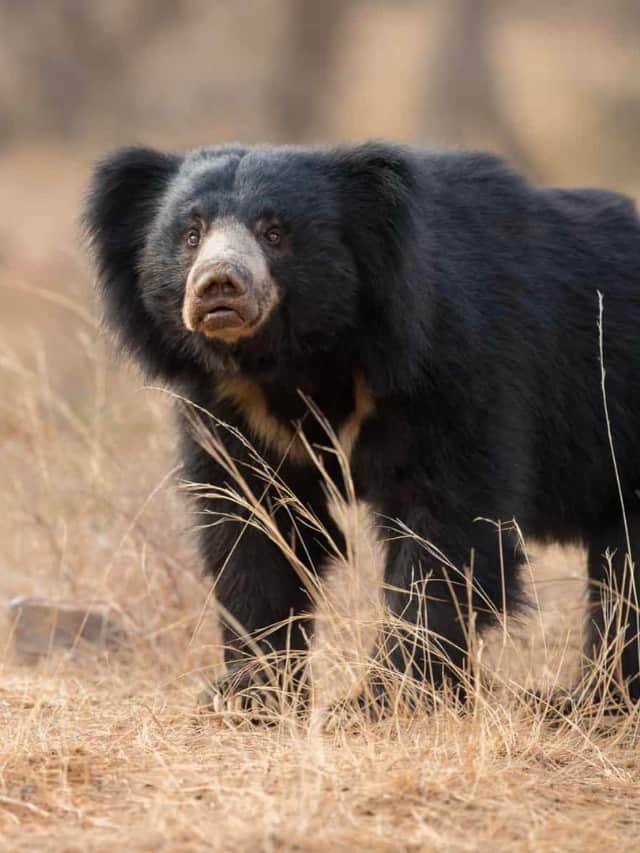
Baloo the bear from Rudyard Kipling’s
The Jungle Book,is a Sloth Bear.
©PhotocechCZ/Shutterstock.com
The largest bear species is the Polar Bear. In fact, polar bears are the largest carnivorous land animal on earth! They can grow up to 8-10 feet long and weigh up to 1,500 pounds. The smallest bear species, on the other hand, is the Sun Bear, which is over ten times smaller than a polar bear! Sun bears are closer to the size of a large dog, growing 4-5 feet long and weighing only 60 pounds.
In addition to various sizes, each bear species also has distinctive features. For example, Asiatic black bears have a crescent-moon shape on their chests, which is why they are also referred to as Moon Bears. Black bears are named for their iconic black fur coat, although not every black bear has black fur. In fact, black bears can also be light brown, reddish-brown or cinnamon, and even white. White black bears, however, are very rare.
While all bears are furry, sloth bears have the shaggiest fur, while sun bears have short fur that helps them stay cool. Polar bears have the thickest fur, which keeps them warm and dry, and there is even fur on the bottoms of their feet!
3. Bears Are Extremely Strong
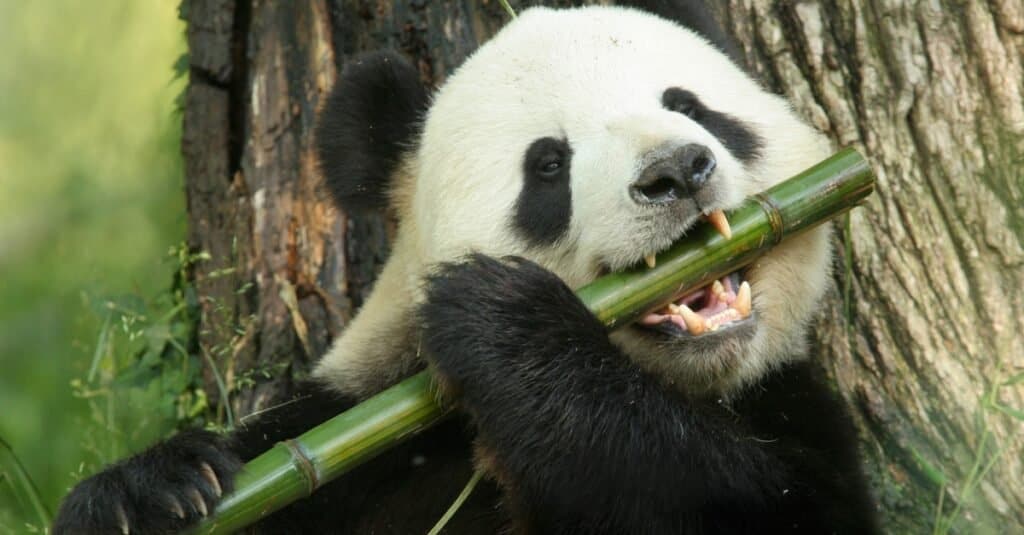
A panda eats a large bamboo stalk. Giant pandas have a false thumb made up of an enlarged carpal bone.
©Bryan Faust/Shutterstock.com
Bears are both large and incredibly strong. A polar bear, for example, can lift over 1,000 pounds of ice! Both grizzly bears and polar bears have a bite force of over 1,000 PSI (Pounds per Square Inch), which is enough power to crush a bowling ball!
Even Giant Pandas are extremely strong, despite their cute and cuddly appearance and demeanor. These gentle giants have very strong teeth and jaws, as well as thick, heavy skulls and powerful muscles. In fact, panda bears have one of the strongest bite forces for a land mammal. It is close to the strength and force of tigers, lions, and hippopotamuses! All this power is why panda bears can crush strong and tough bamboo stalks.
4. Bears Are Also Fast
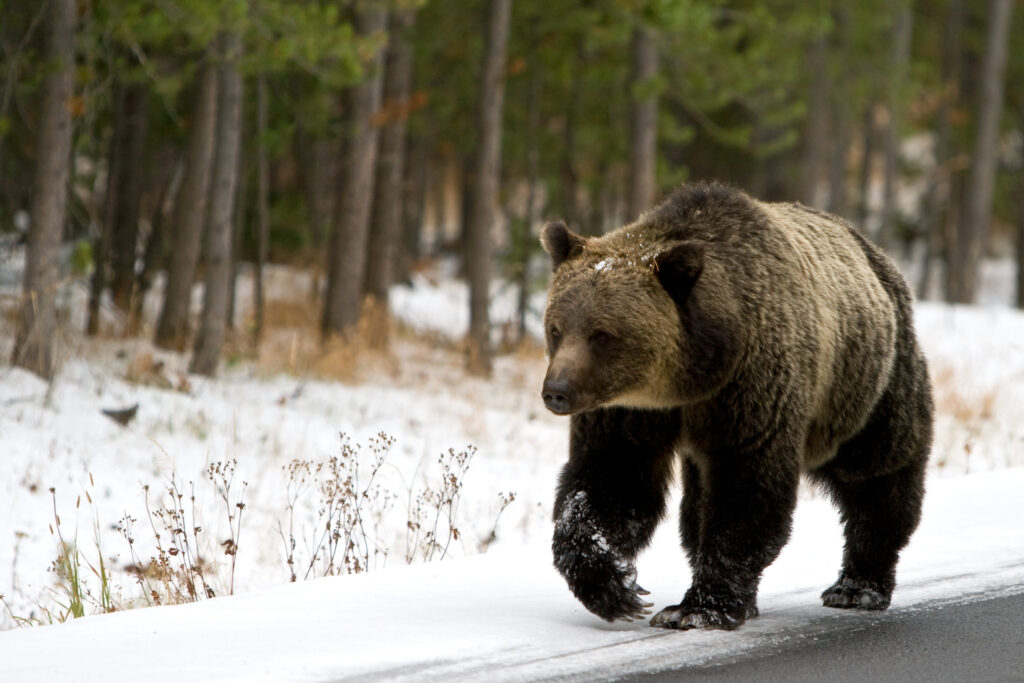
Grizzly bears can be dangerous emerging from hibernation and are a lot faster than they look!
©Paul Knowles/Shutterstock.com
In addition to their incredible strength, bears are also quite fast and can move at surprisingly high speeds. Black bears are the fastest bear species and can run up to 40 mph! Grizzly bears are not too far behind, running at speeds up to 35 mph. These bears are fast enough to catch most horses! In comparison, the fastest human on record is Usain Bolt, who can run 27.5 mph. Ironically, however, a group of bears is actually called a “sloth” of bears.
5. Bears Are Omnivores
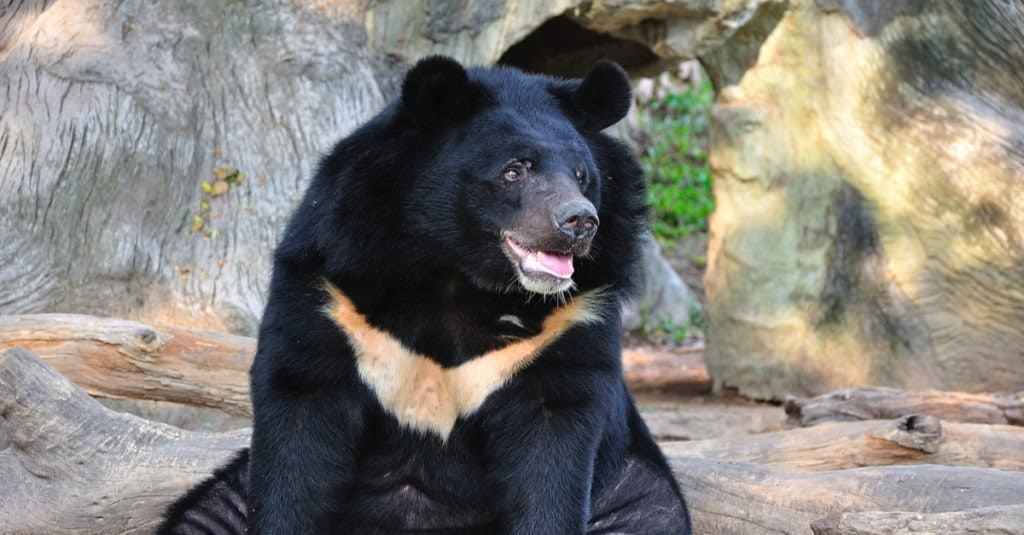
Asiatic black bears (moon bears) spend most of their time up in trees, where they find food and can rest in safety.
©Tigger11th/Shutterstock.com
One of the evolutionary advantages that bears have developed is that they are omnivores and generalists. This means that they eat both plants and meat and are not too picky about what’s for dinner. Brown bears and black bears, for example, often eat various types of berries, seeds, salmon, small mammals, and even carrion. Many bears are also fond of honey, just like Winnie the Pooh. When they raid beehives, bears consume not only the honey, but the bees and larvae along with it!
Polar bears, however, are mostly carnivorous and primarily eat meat. Panda bears, on the other hand, chiefly eat bamboo plants, which makes up 99% of their diet.
6. Bears Can See Color
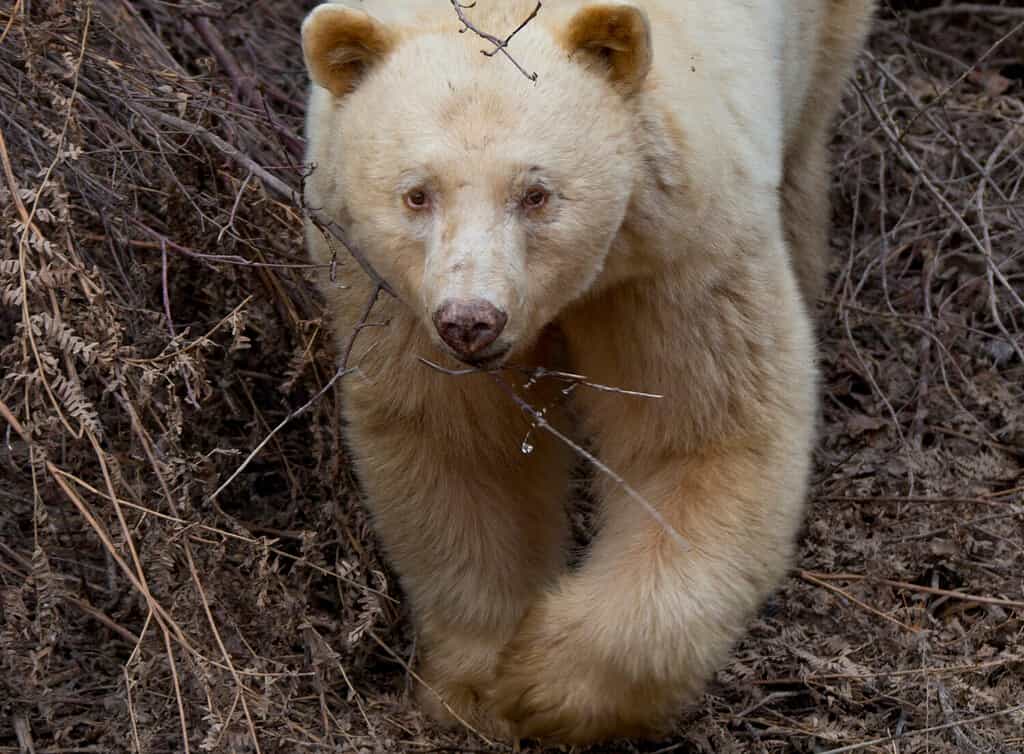
Although it is rare for most mammals, bears can see in color.
©Tara Lynn111/Shutterstock.com
Bears have excellent eyesight and can see almost as well as we can! Their eyes remain light even in the dark, which allows them to find food at night as well as during the day. Unlike many other mammals, bears can also see in color and have very sharp close-up vision as well. Because of this, they can see the differences between foods that look very similar, allowing them to find and obtain food quickly.
7. Bears Can Smell and Hear Much Better Than Humans
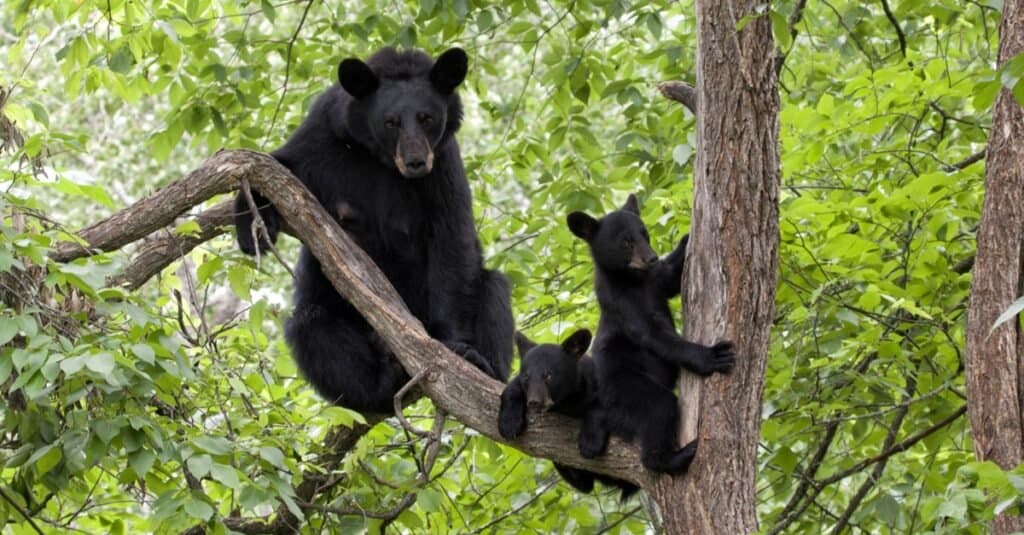
Black bears can be aggressive when there are cubs present.
©Debbie Steinhausser/Shutterstock.com
Even though bears have excellent eyesight, they do not use it as their first line of defense. Instead of primarily relying on sight as humans do, bears instead prioritize their hearing above other senses. Bears can hear much further than they can see, and they can even hear in multiple directions and pick up many more frequencies than humans can. This is one of the reasons that bear cubs have such adorably large ears. Bear ears grow and develop much faster than the rest of their bodies so they can utilize their excellent hearing early on in life.
In addition to amazing ears, bears also have an excellent sense of smell. Bears have very large noses, which gives them a spacious nasal mucosa area inside—at least 100 times bigger and better than that of a human! In addition, a bear’s olfactory bulb is five times larger than a human’s. This means that they can smell really well, even better than a bloodhound! A polar bear, for example, can track scents from several miles away and even under a few feet of solid ice.
8. Bears Are Very Smart
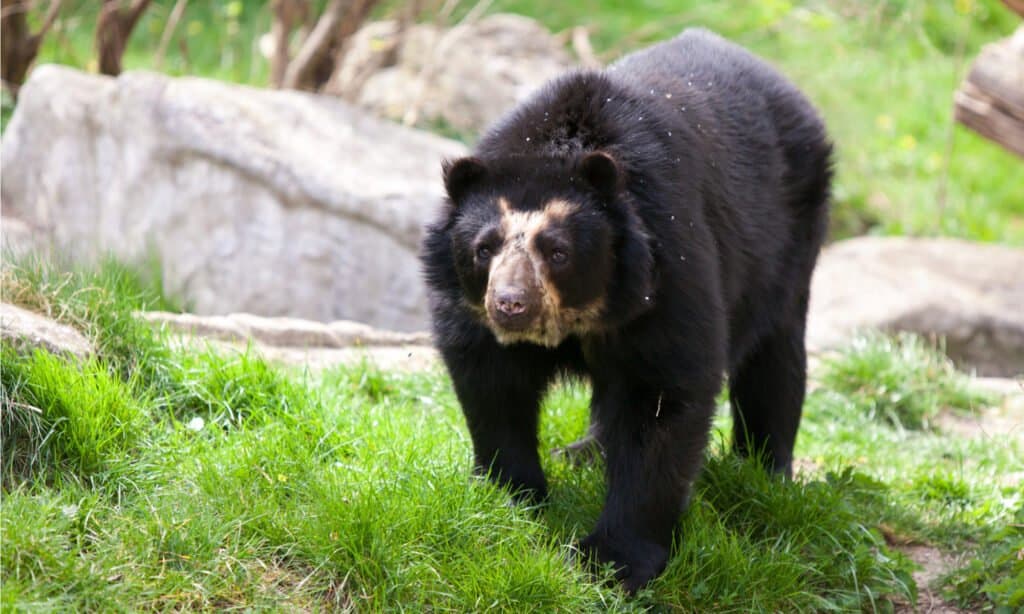
Spectacled Bears get their name from the light-colored patterns in their fur around their eyes, that look like spectacles or eyeglasses. They are also known as Andean Bears and Andean Short-Faced Bears.
©Andrei Preda/Shutterstock.com
Bears have extremely large and complex brains. In fact, bears are one of the smartest animals in North America, with brains that are much larger than most other land mammals. Bears have excellent long-term memory and can keep track of areas where they’ve found food for over ten years.
In addition to a great memory, bears are also quite clever. For example, bears have been recorded hiding from hunters behind trees or rocks, rolling in carrion to cover their scent, and even covering up their tracks so they can’t be followed! Inuit hunters have observed polar bears that pretend to sleep in order to trick young prey animals. In some cases, polar bears have used “tools” and thrown rocks at walruses they are hunting.
Many bears also roll rocks into animal traps and use sticks to set off camera traps, allowing them to steal the bait and get away scot-free. Wildlife photographers often return to their camera traps only to discover that a bear had opened the “hidden” camera and removed the film cartridge or battery!
9. Baby Bears Grow a Lot
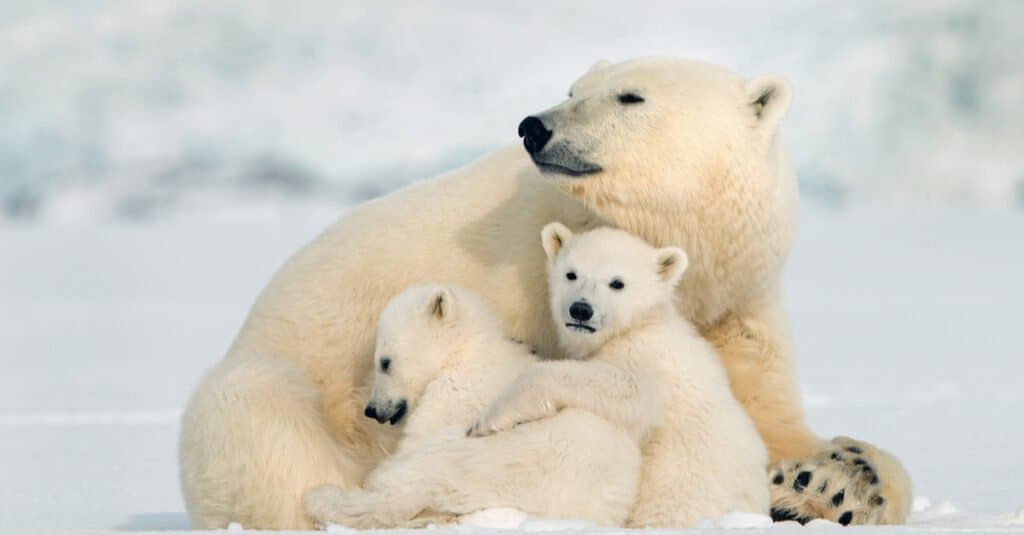
A Polar bear mother with two cubs on ice. Polar bears are born tiny and completely helpless, but grow up to be the largest carnivore on land.
©isabel kendzior/Shutterstock.com
Bears can give birth to as many as 5 cubs at a time. However, they usually only have just two cubs at a time. All newborn bear cubs are very small, no matter which species. Newborn panda bear cubs are the smallest and are about the size of a stick of butter when they are born. Their mothers, on the other hand, can weigh between 150-280 pounds.
Polar bear mothers can weigh up to 650 pounds, but their newborn cubs only weigh around a pound and a half. Kodiak brown bear cubs, on the other hand, may weigh less than a single pound, yet by the time they are fully grown, their weight will increase by 1,000 times. If a human baby grew at the same rate as a bear cub, they would weigh over 6,000 pounds by the time they were fully grown!
10. Humans and Bears Have a Complicated Relationship
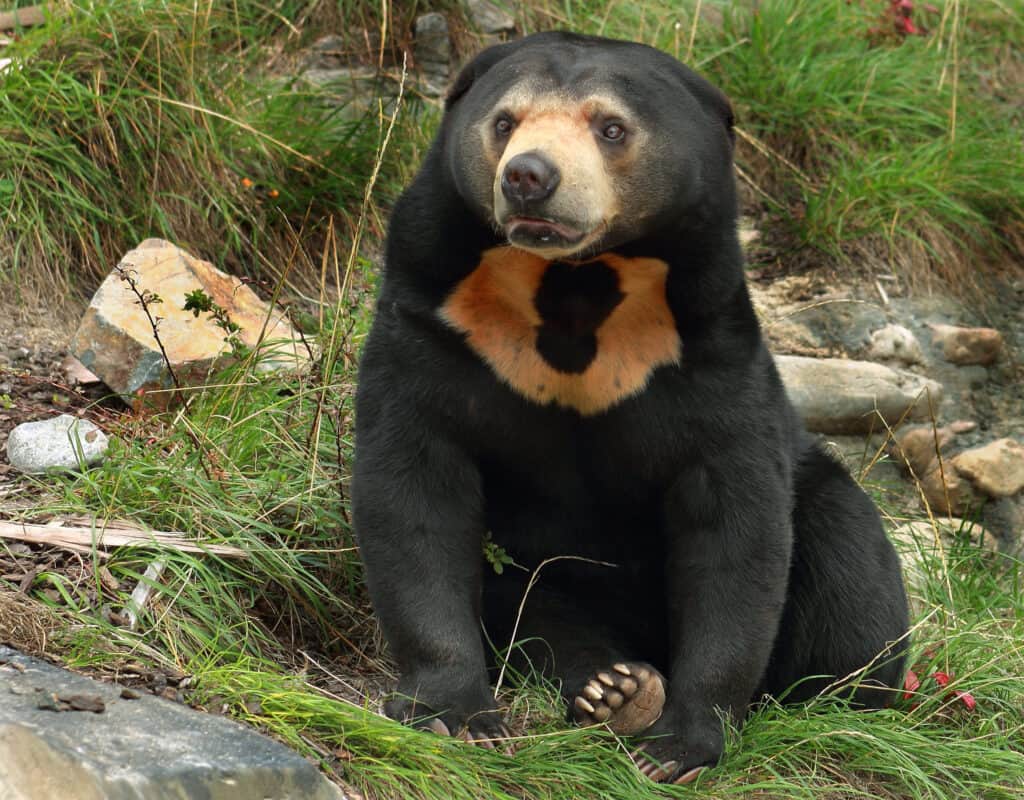
Sun bears are under threat both directly and indirectly from human activities.
©Molly NZ/Shutterstock.com
Bears have both fascinated and terrified humans throughout history. Some cultures incorporated bears into their belief systems, while others exploited them for entertainment. Fortunately, today there are many laws that prohibit using bears and other animals in circuses and other performances.
However, bears are still in a precarious position in our ever-changing world. Due to climate change, for example, many bear species are suffering from habitat loss, and some are even moving into each other’s territories and mating across species, like pizzly bears. Today six of the eight bear species in the world are listed as threatened or vulnerable to extinction on the IUCN Red List.
The photo featured at the top of this post is © VANESSAL/Shutterstock.com
Thank you for reading! Have some feedback for us? Contact the AZ Animals editorial team.



